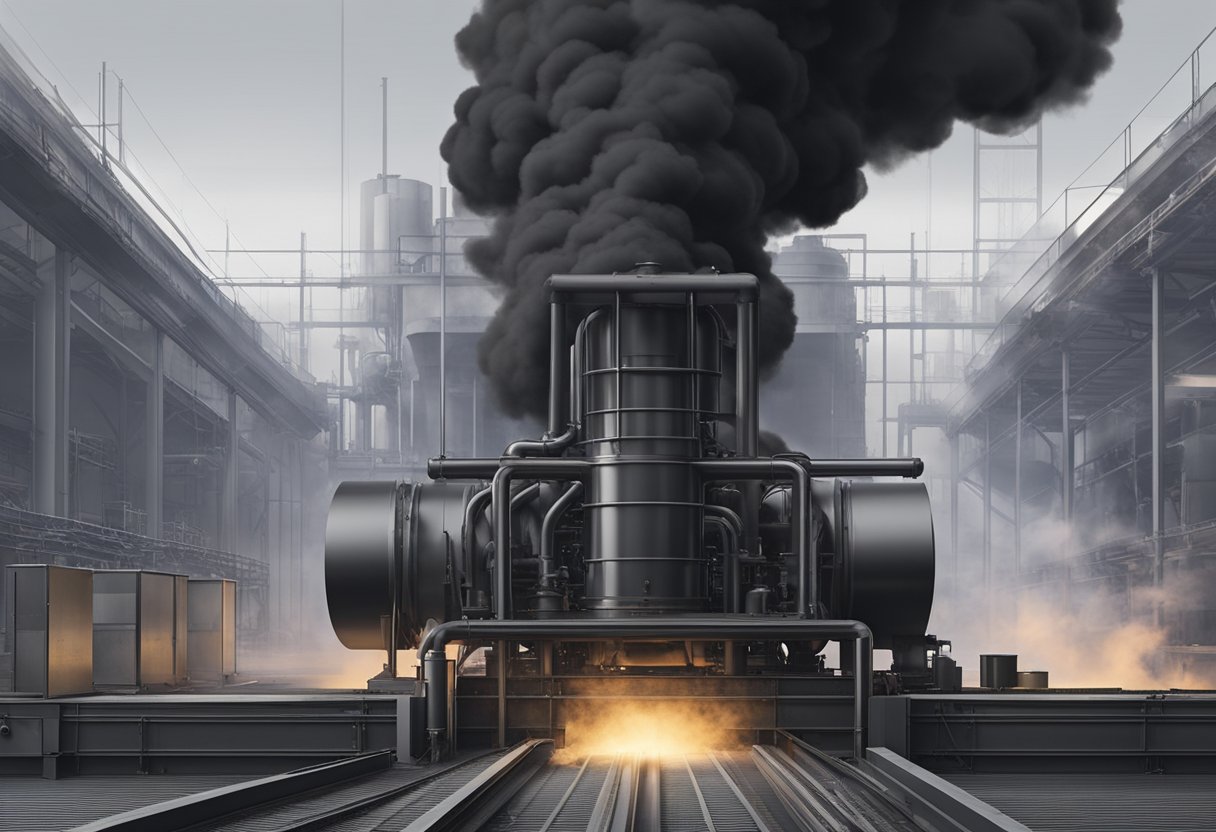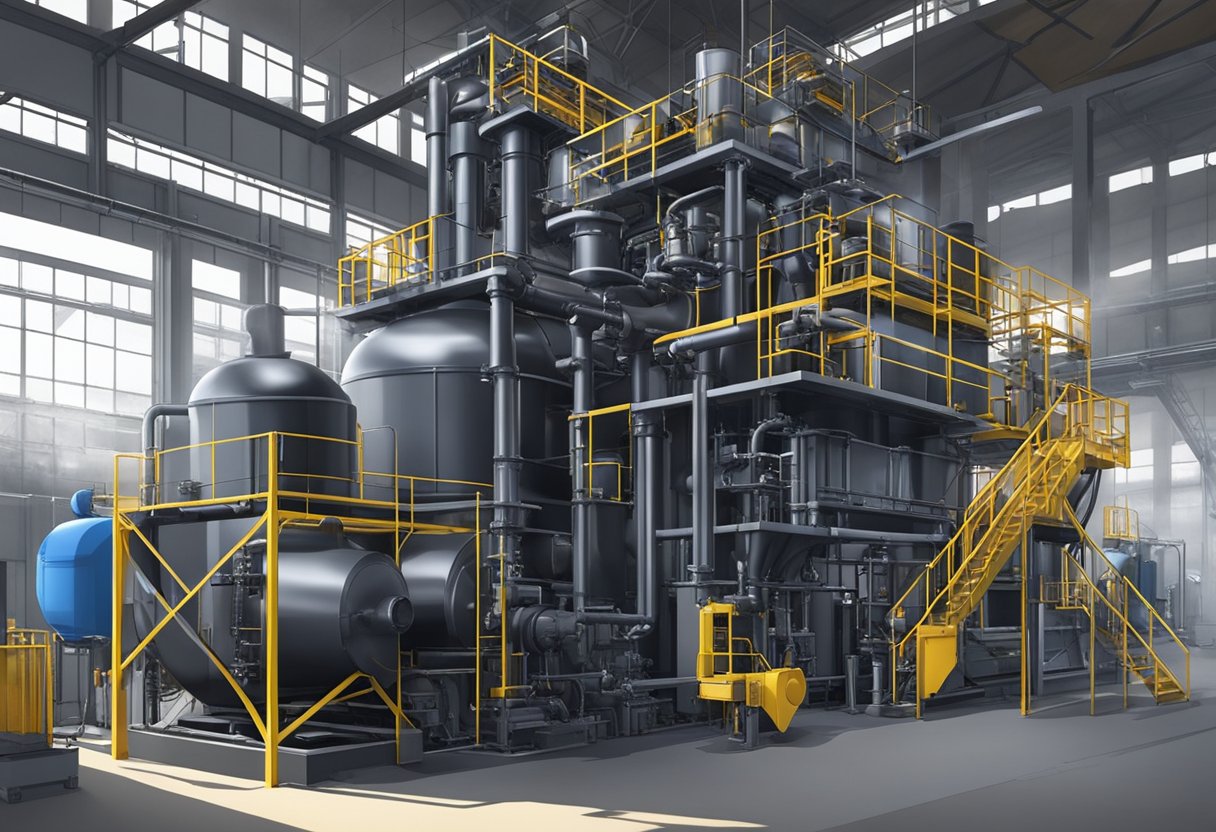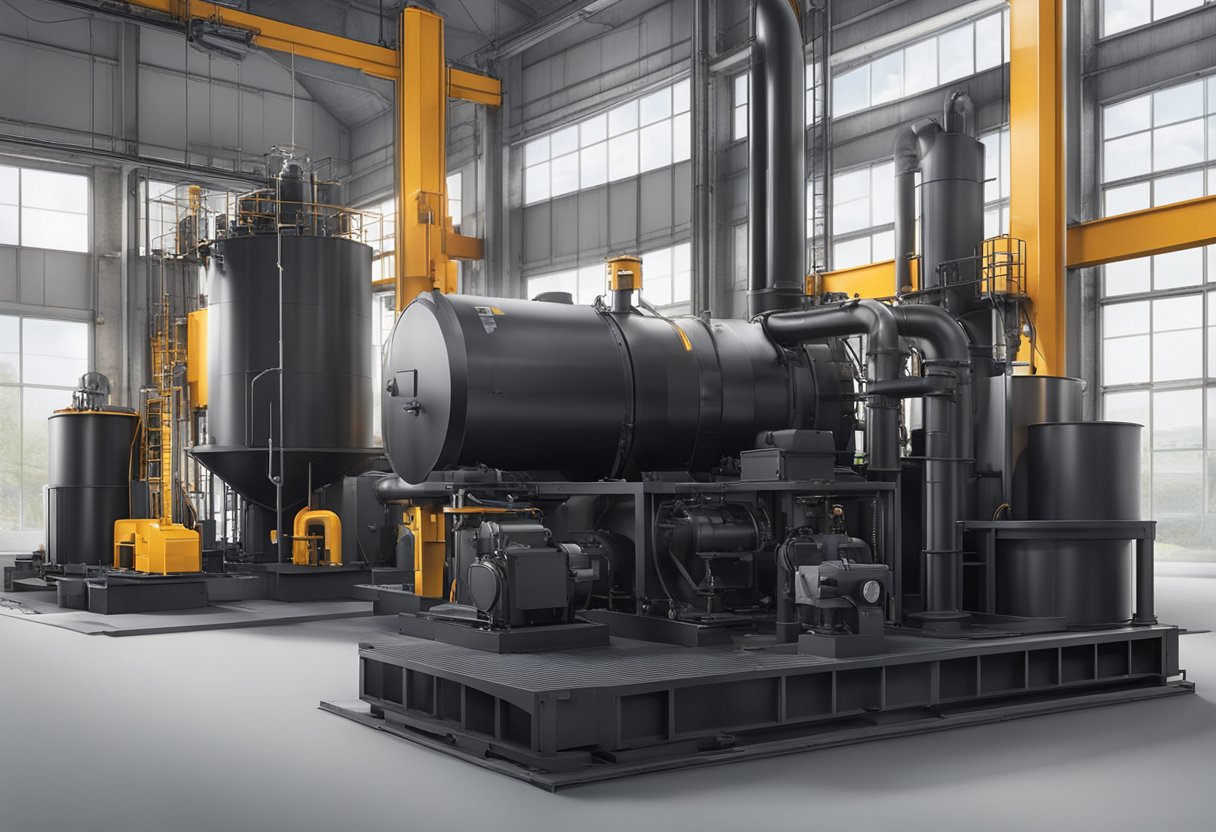Carbon Black N339: Properties and Applications
20/01/2024
Carbon black N339 is a type of reinforcing filler that is widely used in the rubber industry. It is a high-performance carbon black that is produced by the furnace process. The material is known for its excellent reinforcing properties, which make it an ideal choice for use in a wide range of rubber products.

Carbon black N339 is a type of carbon black that is characterized by its high structure and low surface area. The material is produced by the partial combustion of hydrocarbons, which results in the formation of fine particles of carbon black. These particles are then collected and processed to produce the final PHENOLIC RESIN product. Carbon black N339 is widely used in the production of tires, hoses, belts, and other rubber products due to its excellent reinforcing properties.
Chemical Properties

Molecular Structure
Carbon black N339 is a type of carbon black that is composed of carbon atoms. Its molecular formula is C and it has a molecular weight of approximately 12.01 g/mol. The carbon atoms in N339 are arranged in a hexagonal lattice structure, forming a three-dimensional network of covalent bonds. This unique structure gives carbon black N339 its distinctive properties, including its high surface area and high electrical conductivity.
Physical Characteristics
Carbon black N339 is a fine, black powder with a particle size distribution ranging from 10 to 100 nanometers. It has a specific surface area of approximately 90 m2/g and a bulk density of 480 kg/m3. N339 is insoluble in water and organic solvents, but it can be dispersed in certain solvents such as chloroform. It is also resistant to heat, chemicals, and UV radiation.
Carbon black N339 has a wide range of industrial applications, including as a reinforcing filler in rubber compounds, as a pigment in inks and coatings, and as a conductive additive in electronic materials. Its unique combination of physical and chemical properties makes it a versatile and valuable material for a variety of industries.
Manufacturing Process

Furnace Black Method
Carbon black N339 is manufactured through the furnace black method. This process involves the incomplete combustion of heavy petroleum products, such as oil or tar, in a furnace. The resulting black soot is then collected and processed to produce carbon black.
The furnace black method is a highly controlled process that involves precise temperature and pressure conditions. The resulting carbon black is a fine powder with a high surface area and excellent reinforcing properties.
Thermal Black Process
In addition to the furnace black method, carbon black N339 can also be produced through the thermal black process. This process involves the decomposition of hydrocarbons, such as natural gas or propane, in a reactor at high temperatures.
The thermal black process produces carbon black with a slightly different morphology compared to the furnace black method. This process typically results in a lower surface area and lower reinforcing properties.
Overall, the manufacturing process for carbon black N339 is a complex and precise process that involves careful control of temperature, pressure, and other variables to produce a high-quality product.
Applications

Rubber Reinforcement
Carbon black N339 is widely used as a reinforcing agent in the rubber industry. It is commonly added to natural and synthetic rubber compounds to improve their mechanical properties, such as tensile strength, tear resistance, and abrasion resistance. The high surface area and porosity of N339 provide a large contact area with the rubber matrix, resulting in a strong bond between the carbon black particles and the rubber molecules. This leads to improved durability and performance of rubber products, such as tires, conveyor belts, and hoses.
Plastics Pigmentation
Carbon black N339 is also used as a pigment in the plastics industry. It provides a deep black color and good UV stability to plastic products, such as automotive parts, electrical appliances, and packaging materials. The fine particle size and high tinting strength of N339 enable it to be used at low concentrations, resulting in cost-effective and efficient coloring of plastics.
Coatings and Inks
Carbon black N339 is a common ingredient in coatings and inks due to its excellent dispersibility and color properties. It is commonly used in automotive coatings, architectural coatings, and printing inks to provide a deep black color, good hiding power, and resistance to weathering and fading. The high surface area and porosity of N339 also provide good adhesion and durability to coatings and inks.
Overall, carbon black N339 is a versatile and widely used carbon black grade that finds applications in various industries due to its unique properties and performance benefits.
Market Analysis

Demand and Supply Trends
Carbon black N339 is a widely used reinforcing filler in the rubber industry. The demand for carbon black N339 is driven by the growth of the automotive and tire industries. The demand for carbon black N339 is expected to grow at a steady pace due to the increasing demand for tires and rubber products in emerging economies.
The supply of carbon black N 339 is dominated by a few key players in the market. The production of carbon black N 339 is a complex process that requires significant investment in infrastructure and technology. The supply of carbon black N 339 is expected to remain stable due to the high barriers to entry in the market.
Regional Market Insights
The Asia-Pacific region is the largest market for carbon black N339, accounting for more than 50% of the global demand. The growth of the automotive and tire industries in China and India is driving the demand for carbon black N 339 in the region. The demand for carbon black N 339 in North America and Europe is expected to grow at a slower pace due to the maturity of the automotive and tire industries in these regions.
In conclusion, the demand for carbon black N 339 is expected to grow at a steady pace due to the growth of the automotive and tire industries in emerging economies. The supply of carbon black N 339 is expected to remain stable due to the high barriers to entry in the market. The Asia-Pacific region is the largest market for carbon black N 339, driven by the growth of the automotive and tire industries in China and India.
Environmental Impact
Emissions and Regulations
Carbon black N 339 is a widely used material in the rubber industry, and its production can have significant environmental impacts. The manufacturing process involves the combustion of heavy petroleum products, which releases large amounts of carbon dioxide, sulfur dioxide, and nitrogen oxides into the atmosphere. These emissions contribute to air pollution and can have negative effects on human health and the environment.
To address these concerns, regulations have been put in place to limit the emissions from carbon black production facilities. In the United States, the Environmental Protection Agency (EPA) has established emission standards for carbon black manufacturing plants. These regulations require facilities to monitor and report their emissions, and to implement measures to reduce their environmental impact.
Sustainability Efforts
In recent years, there has been a growing focus on sustainability in the carbon black industry. Manufacturers are implementing measures to reduce their environmental impact and improve the sustainability of their operations.
One approach is to use renewable energy sources to power carbon black production. Some companies are investing in wind, solar, or hydroelectric power to reduce their reliance on fossil fuels and lower their carbon footprint.
Another strategy is to improve the efficiency of the manufacturing process. By optimizing production methods and reducing waste, companies can lower their energy consumption and minimize their environmental impact.
Overall, the carbon black industry is working to balance the demand for their products with the need to protect the environment. Through regulations and sustainability efforts, manufacturers are striving to minimize their emissions and improve the sustainability of their operations.
Technical Specifications
Particle Size Distribution
Carbon black N 339 has a relatively narrow particle size distribution, with an average particle size of 32 nm. The size distribution ranges from 22 nm to 44 nm, with 90% of the particles falling within the range of 25 nm to 39 nm. This uniformity in particle size distribution provides consistent performance in various applications.
Surface Area and Porosity
Carbon black N 339 has a high surface area and porosity, which makes it suitable for various applications. The BET surface area of N339 is 102 m²/g, and the DBP absorption is 123 cm³/100g. The high surface area and porosity of N339 provide excellent reinforcement and coloring properties in rubber compounds.
In summary, carbon black N 339 has a narrow particle size distribution, high surface area, and porosity, making it an excellent choice for various applications. Its consistent performance and high-quality properties make it a popular choice in the rubber industry.
Handling and Safety
Storage Recommendations
Carbon black N 339 should be stored in a dry, cool, and well-ventilated area. The storage temperature should be below 40°C (104°F) to prevent any possible decomposition. The bags or containers should be kept tightly closed when not in use to prevent moisture from entering and causing clumping or caking.
It is important to avoid any contact with incompatible materials such as strong oxidizers, acids, and alkalis. Carbon black N 339 should be segregated from these materials to prevent any potential hazards.
Exposure Controls
When handling carbon black N 339, it is important to take necessary precautions to prevent exposure. The following recommendations should be followed:
- Wear appropriate personal protective equipment (PPE) such as gloves, safety glasses, and respiratory protection.
- Avoid inhalation of dust by using local exhaust ventilation or respiratory protection.
- Avoid skin contact by wearing appropriate PPE and washing thoroughly after handling.
- Avoid ingestion by not eating, drinking, or smoking in areas where carbon black N 339 is being handled.
In case of accidental exposure, follow the first aid measures listed on the safety data sheet (SDS) and seek medical attention if necessary.
Overall, handling carbon black N339 requires proper storage and handling procedures to prevent any potential hazards. By following the recommended precautions, exposure can be minimized and the safety of personnel can be ensured.
Frequently Asked Questions
How does N 339 grade carbon black enhance tire performance?
N339 grade carbon black is known for its ability to provide excellent reinforcement, abrasion resistance, and durability to tires. It helps to improve the mechanical properties of rubber, such as tensile strength, tear resistance, and modulus, which results in better tire performance. The high structure and surface area of N339 grade carbon black also contribute to improved wet traction and reduced rolling resistance, leading to better fuel efficiency.
What distinguishes carbon black N 339 from N330 in terms of properties and applications?
Carbon black N 339 has a higher structure and surface area compared to N330, which makes it more suitable for applications that require high reinforcement and abrasion resistance. N339 is commonly used in the production of high-performance tires, industrial rubber products, and plastics. On the other hand, N330 is a more versatile grade of carbon black that is used in a wide range of applications, including tires, coatings, inks, and plastics.
What are the current market trends influencing the price of carbon black N 339?
The price of carbon black N 339 is influenced by several factors, including the cost of raw materials, supply and demand dynamics, and global economic conditions. The increasing demand for high-performance tires and the growing automotive industry are expected to drive the demand for carbon black N 339 in the coming years. However, the volatility of crude oil prices and the availability of raw materials can affect the production costs of carbon black, which may impact the price of N339.
In which industries is carbon black N 339 most commonly utilized?
Carbon black N339 is primarily used in the tire industry, where it is used as a reinforcing filler to improve the mechanical properties of rubber. It is also used in the production of industrial rubber products, such as belts, hoses, and seals. Additionally, N339 is used in the production of plastics, such as polypropylene and polyethylene, to improve their mechanical properties and UV resistance.
Can carbon black N 339 be used in applications outside of tire manufacturing?
Yes, carbon black N 339 can be used in a wide range of applications outside of tire manufacturing. It is commonly used in the production of industrial rubber products, such as conveyor belts, gaskets, and seals. N339 is also used in the production of plastics, such as automotive parts, pipes, and packaging materials. Additionally, it is used in coatings, inks, and toners to provide color and UV resistance.
What environmental considerations are associated with the use of carbon black N 339?
The production of carbon black N 339 involves the combustion of hydrocarbons, which can release carbon dioxide and other greenhouse gases into the atmosphere. Additionally, the handling and storage of carbon black can generate dust and other particulate matter, which can pose a health risk to workers and the environment. To mitigate these environmental impacts, carbon black manufacturers have implemented various measures, such as using cleaner production technologies, improving energy efficiency, and implementing dust control measures.




